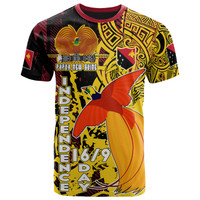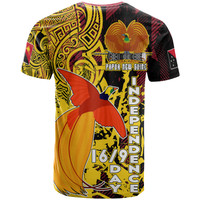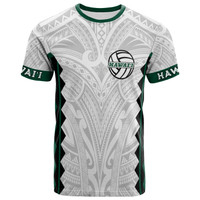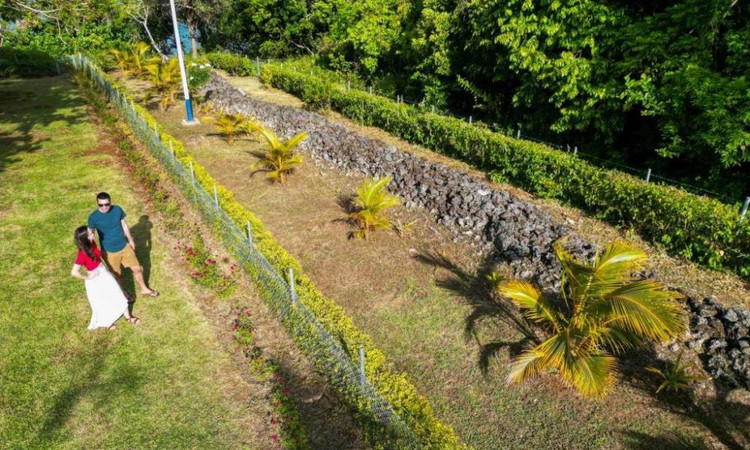Fascinating Historical Places in Tonga
Posted by Maris on 1st Oct 2024
The history of Tonga is fascinating and colorful, filled with tales of rulers, colonization, tribes, and foreign contacts. Plaques and memorials honoring some of these pivotal moments in Tonga's history can be found in historically significant locations around the four main island groups of the nation. Odd megaliths and ancient tombs also serve as noteworthy historical sites. Look through the list below for some of the historical locations in Tonga that you may visit!
Before we start, bookmark A Brief History of Tonga for a little more background on the country's historical landmarks.
Ha’amonga ‘a Maui (Tongatapu)

The Ha'amonga 'a Maui is perhaps Tonga's most famous historical landmark. Tu'i Tonga Tu'itatui, one of Tonga's early monarchs, is credited with building this historic coral stone trilithon in the thirteenth century. The historical hypotheses underlying the construction of the megalith are explained on interpretation panels at the Niutoua site.
Velata Mound Fortress (Ha’apai)
Visit the Velata Mound Fortress to see an illustration of a typical ditch fortification used throughout the South Pacific from the 15th to the 19th century. The Velata Mound castle is marked by a sign featuring an aerial representation of the castle and a plaque detailing its history. It is situated in the settlement of Hihifo on the island of Lifuka in the Ha'apai Group.
Paepae ‘o Tele’a and Terraced Tombs (Tongatapu)

The most common type of historical site in Tonga is ancient tombs, some of which are the Paepae 'o Tele'a Royal Tombs. Just two of the approximately 28 Terraced Tombs—each in a stone tomb that resembles a pyramid—can be seen in the hamlet of Lapaha on Tongatapu. These are the Paepae 'o Tele'a. One of the tombs belongs to Tele'a, a 16th-century King of Tu'i Tonga.
Kilikilitefua Wall (Vava’u)

The Kilikilitefua Wall in Vava'u is another historical site that revolves around several royal lineages over time. About 400 years ago, the royal family underwent a unique census in which pebbles were deposited at Kilikilitefua for every family member. This area was covered with so many volcanic rocks that it formed a wall, albeit one that is not quite like the one visible from space. It is reported that the wall was much larger before locals started stealing stones for their building projects.
Tokopuha Folokotoa (‘Eua)

A coffin-shaped pit amid the rock pools of Tufuvai Beach is Tokopuha Folokotoa, one of the most intriguingly creepy historical places on the island of Eua. It's a little difficult to find. Local tradition states that only royal family members were permitted to be buried on land during the reign of 'Eua's renowned warrior Kaufana and his two brothers Talimalolo and Faivalava. The remains of the remaining inhabitants of 'Eua would be deposited in this fissure in the reef floor and eventually sink to the bottom. Later generations, of course, outlawed the practice.
Abel Tasman Landing Site (Tongatapu)

Tongatapu has you covered for the locations of the first European landing sites in Tonga, beginning with the Abel Tasman Landing Site on the island's northwest tip. An information panel at the site describes the first meeting between the Tongan people and the Dutch explorer's crew, and a plaque also marks the event, which took place on January 21, 1643.
Captain Cook Landing Site (Tongatapu)

Additionally, Captain James Cook, a British explorer, landed close to the town of Mu'a on the shore of the Fanga'utu Lagoon in 1777. The site of the 1777 event is marked with a plaque in the location of the former banyan tree. In 1970, Queen Elizabeth II made a well-known visit to the location.
Royal Palace (Tongatapu)

The Royal Palace, a famous building on Nuku'alofa's waterfront, represents the Kingdom of Tonga. King George Tupou I had the kauri timber palace constructed for him in 1864. It continues to be the royal family's home today.
Mala’ekula Royal Tombs (Tongatapu)

The Royal Tombs, located in a vast grassy area in the heart of Nuku'alofa, are an unmistakable sight. They serve as the final resting place for the Tupou royal family members, going all the way back to King Taufa'ahau Tupou I, who passed away in 1893. Visitors are forced to view the imposing monuments from a distance as the historical site is closed off to the general public.
Port Au Prince Memorial (Ha’apai)

See the location where, on November 26, 1806, the captain and almost half of the crew of the Port au Prince were killed by visiting a monument north of Ha'apai's airport runway on Lifuka. The ship was originally French, but the British took it and turned her into a pirate. William Mariner, an English writer who spent four years living among Tongans and whose meticulous journal was eventually published as The Tongan Islands, William Mariner's Account, arrived on that ship.
















